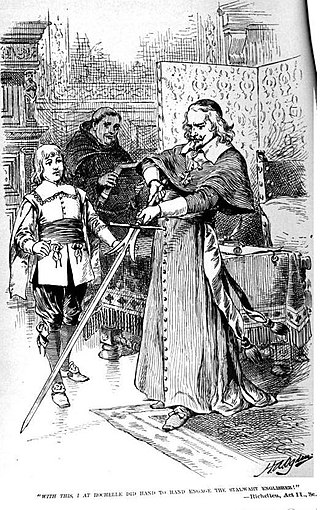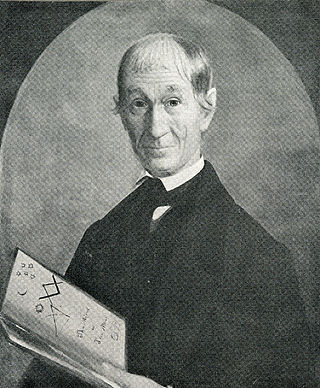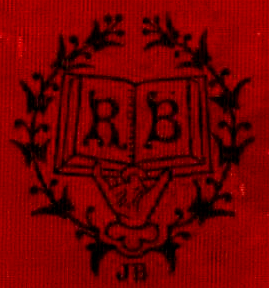
Benjamin Banneker was an African-American naturalist, mathematician, astronomer and almanac author. A landowner, he also worked as a surveyor and farmer.

Liberty Hyde Bailey was an American horticulturist and reformer of rural life. He was cofounder of the American Society for Horticultural Science. As an energetic reformer during the Progressive Era, he was instrumental in starting agricultural extension services, the 4-H movement, the nature study movement, parcel post and rural electrification. He was considered the father of rural sociology and rural journalism.

An almanac is a regularly published listing of a set of current information about one or multiple subjects. It includes information like weather forecasts, farmers' planting dates, tide tables, and other tabular data often arranged according to the calendar. Celestial figures and various statistics are found in almanacs, such as the rising and setting times of the Sun and Moon, dates of eclipses, hours of high and low tides, and religious festivals. The set of events noted in an almanac may be tailored for a specific group of readers, such as farmers, sailors, or astronomers.

Poor Richard's Almanack was a yearly almanac published by Benjamin Franklin, who adopted the pseudonym of "Poor Richard" or "Richard Saunders" for this purpose. The publication appeared continually from 1732 to 1758. It sold exceptionally well for a pamphlet published in the Thirteen Colonies; print runs reached 10,000 per year.

William Caslon I, also known as William Caslon the Elder, was an English typefounder. The distinction and legibility of his type secured him the patronage of the leading printers of the day in England and on the continent. His typefaces transformed English type design and first established an English national typographic style.

The Old Farmer's Almanac is an almanac containing weather forecasts, planting charts, astronomical data, recipes, and articles. Topics include gardening, sports, astronomy, folklore, and predictions on trends in fashion, food, home, technology, and living for the coming year. Published every September, The Old Farmer's Almanac has been published continuously since 1792, making it the oldest continuously published periodical in North America. The publication follows in the heritage of American almanacs such as Benjamin Franklin’s Poor Richard's Almanack.

Old Moore's Almanac is an almanac which has been published for nearly two and a half centuries. Its founder, Theophilus Moore, ran a classical academy at Milltown which was then a village near Dublin. A teacher of Irish, English, Greek and Latin, he became known as a clever mathematician and a wizard of astrology, gaining the nickname 'The Irish Merlin'. He published his Old Moore's Almanac for the first time in 1764, and received such support that the other Irish almanacs gradually dwindled away. Theophilus Moore is now buried in the Drumcondra Churchyard, in Dublin, but the tradition of Old Moore's Almanac continues unbroken to this day.

James Duckett was an English Catholic layman and martyr, executed at Tyburn for printing Catholic devotionals.
Robert, Rob, Bob, or Bobby Thomas may refer to:

"The pen is mightier than the sword" is an expression indicating that the written word is more effective than violence as a means of social or political change. This sentiment has been expressed with metaphorical contrasts of writing implements and weapons for thousands of years. The specific wording that "the pen is mightier than the sword" was first used by English author Edward Bulwer-Lytton in 1839.

Dudley Leavitt was an American publisher. He was an early graduate of Phillips Exeter Academy in his native town of Exeter, New Hampshire, and later moved to Gilmanton where he first edited a newspaper and taught school. Within a few years, Leavitt relocated to Meredith, where in addition to teaching school and farming, he began publishing in 1797 Leavitt's Farmers Almanack, one of the nation's earliest farmers' almanacs. A polymath, Leavitt poured his knowledge of disparate fields including mathematics, language and astronomy into the wildly popular almanacs, which outlived their creator, being published until 1896. The inaugural issue of 1797 carried the title of The New England Calendar: Or, Almanack for the Year of Our Lord 1797. On the cover was the disclaimer that the new publication was "Calculated for the Meridian of Concord, Latitude 43° 14' N. Longitude 72° 45' W.: And with But Little Variation Will Answer for Any of the New England States."

Ames' Almanack (almanac) was the first almanac printed in the British North American colonies. While Benjamin Franklin's Poor Richard's Almanack is more widely known, the Ames' Almanack had a much larger readership. Franklin's publication had a circulation of 10,000 copies compared to 60,000 for the Ames' Almanack.

Messrs. Roberts Brothers (1857–1898) were bookbinders and publishers in 19th-century Boston, Massachusetts. Established in 1857 by Austin J. Roberts, John F. Roberts, and Lewis A. Roberts, the firm began publishing around the early 1860s. American authors included: Louisa May Alcott, Susan Coolidge, Emily Dickinson, Maud Howe Elliott, Louise Imogen Guiney, Julia Ward Howe, Helen Hunt Jackson, Abigail May Alcott Nieriker. British and European authors included: Berthold Auerbach, Caroline Bauer, Mathilde Blind, Juliana Horatia Ewing, Anne Gilchrist, David Gray, Philip Gilbert Hamerton, Jean Ingelow, Vernon Lee, William Morris, Silvio Pellico, Adelaide Ristori, A. Mary F. Robinson, George Sand, Charlotte Mary Yonge, Helen Zimmern.
Peter Goelet was a merchant and real estate entrepreneur of New York City.
According to accounts that began to appear during the 1960s or earlier, a substantial mythology has exaggerated the accomplishments of Benjamin Banneker (1731–1806), an African-American naturalist, mathematician, astronomer and almanac author who also worked as a surveyor and farmer.
A tradition of almanacs published for the purposes of North America began in New England in the 17th century. A New World's dwelling would seldom be found without the latest print of North American almanac and The Pilgrim's Progress.

Thomas Affleck was a Scottish-American nurseryman, almanac editor, and agrarian writer and Southern plantation owner. He published the Southern Rural Almanac and Plantation and Garden Calendar from 1851 to 1861.
Richard Plunkett (1788–1832) was a Parish Officer of the Law, variously described as a headborough, beadle or night-constable, in Whitechapel, in the East End of London, between 1817 and 1826. His duties were centred upon the Whitechapel watch-house, from which he and his watchmen had to deal with nocturnal criminality in an area of rapidly increasing population, crowded conditions with poor sanitation, and much urban poverty and squalor. Plunkett's term of office just preceded the Metropolitan Police Act 1829, by which a new system of policing was introduced. Plunkett was often called upon to give evidence at the Old Bailey, the cases being scheduled for hearings two or three times a year. His testimony and that of his officers in these more serious cases show his relations with the population at large, his investigations, pursuits and arrests, often based on personal knowledge of the offenders. The majority of these cases resulted in convictions leading to penal transportation. His work illustrates the real activities of the parish police of Whitechapel just over a decade before the writing of Oliver Twist.













